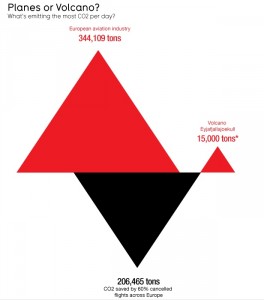Open Source is an alternative to unsustainable freemium services like Ning
One of the big stories in educational technology over the last few days has been the decision of Ning to cease providing free network sites. Many educationalists have been attracted to Ning by the ease of setting up and customising community sites and the use friendliness of the application.
Ning says the reason behind the decision is business: “Our Premium Ning Networks like Friends or Enemies, Linkin Park, Shred or Die, Pickens Plan, and tens of thousands of others both drive 75% of our monthly US traffic, and those Network Creators need and will pay for many more services and features from us.
So, we are going to change our strategy to devote 100% of our resources to building the winning product to capture this big opportunity. We will phase out our free service.”
OK, it is sad and traumatic for those who have invested heavily in building communities based on Ning and cannot afford to apy for the premium service. But is it surprising?
We have all become used to using free social software services. But, at the end of the day we live in a capitalist society. Yes, the software industry is evolving new business models. But are they in the long term sustainable. Ning, like many other services such as PBwiki, has based its economic model on providing a free ‘basic’ service and an enhanced premium service. Providing free services for education could be seen as having two benefits. the first is in publicising and popularising a particular service in the hope it will then attract sufficient premium business customers to justify the cost of the free service. The second is to hope that sufficient education customers will see the benefit of upgrading to the free service. I suspect there are three problems with this. The first is that in the present economic climate educational institutions and projects are looking to reduce expenditure on technology. The second is the increasing availability of competing services, making it difficult for any one company to dominate a market (unless the name is Google). And then there is the long tail – as the Ning press statements suggest, many of these network sites drive very little traffic. I myself have 43 PBwiki sites – many of them created for a short period of interaction with a limited number of colleagues.
The main model to support free services is advertising. Advertising is what drives Facebook’s relentless, aggressive and often unpopular innovations in their site design and functionality (and associated reduction in rights to privacy). I am not an economist but cannot understand how this market can continue to expand indefinitely. Surely there is a finite limit to the amount fo advertising the web market can absorb. Of course, it can continue to expand rapidly as long as web traffic continues to grow at a fast rate, but one day it must and will tail off. And as more players enter the market and attempt to challenge Google’s domination (Google is above all, an advertising company) the cost of advertising and therefore the returns will fall. Apple are set to enter the mobile advertising market with the release of version 4 of the iPhone software. Will companies invest yet more in advertising or will Apple’s share of the market be at the expense of someone else. In the long run this cannot be a sustainable business model.
Of course there are other ways of sustaining development. I am particularly impressed with Forio, an online application for creating simulations. Forio is free to use and the company encourages users to share their code under a Creative Commons license. The business appears to be supported by offering a service creating simulations for those without the time of ability and by providing training in how to use their application.
For education this raises issues – besides the long running issue of whether it is appropriate to provide educational sites carrying prominent advertising. Is it wise to rely on services which can be withdrawn at any time. Of course it is possible to undertake a risk assessment and I guess many large institutions do this. But for many of us working in teh long tail of education, even this may be beyond our knowledge and resources.
A major issue for me, and one which influenced me against using Ning, is that there was no obvious way of extracting my data from the site. It is good to see that Ning have said they will work to help users extract their data if they choose not to upgrade to the premium service. But surely this service should have been provided all along.
Somewhere in all this there is some kind of ethical issue. Readers with long memories may remember my posts protesting at Elgg’s proposed closure of the Eduspaces blog site, something over two years ago. I do not feel so bitter about Ning;s decision. Elgg was part of our community, Ning has never pretended to be anything other than a commercial service. And yet, in offering a free service for education and for the community, should nt there be some element fo ethical responsibility. Should companies offer a service they are unlikely to be able to sustain. And can we afford to be reliant on business’s from outside our community, with no ethical attachment to our aims and purposes?
It is also good to see the discussion within the community on different options to Ning – see for example Seven Sexiest Alternatives to Ning. Many of these are smaller companies, offering much the same service as Ning has in the past and hoping to casg in on Ning’s withdrawal of free services. It is particularly heartening to see that Buddypress rates highly in many of the discussions (as also does Elgg). Buddypress, a social networking plug in for WordPress MultiUser is Open Source Software. Buddypress is not a hosted service, although there are some companies now offering hosted sites. This means it is not free. It requires a server to run it on and expertise and knowledge in configuring and maintaining the application. But firstly the data is your own and you can archive and export the data. Secondly you are free to extend or modify your site in any way you wish. And thirdly the costs incurred tend to go into local and community employment – to provide more technicians in educational establishments or to support local software administrators – many of them working in small or medium enterprises – rather than to large international companies, even if these costs are hidden through advertising or premium services.
This, in turn, builds the pool of skill and competences in our communities, be it educational or the wider geographically based community. And research suggest that small and community based enterprises are the major driving fore for innovation, rather than the large companies that dominate so much of our economies.

